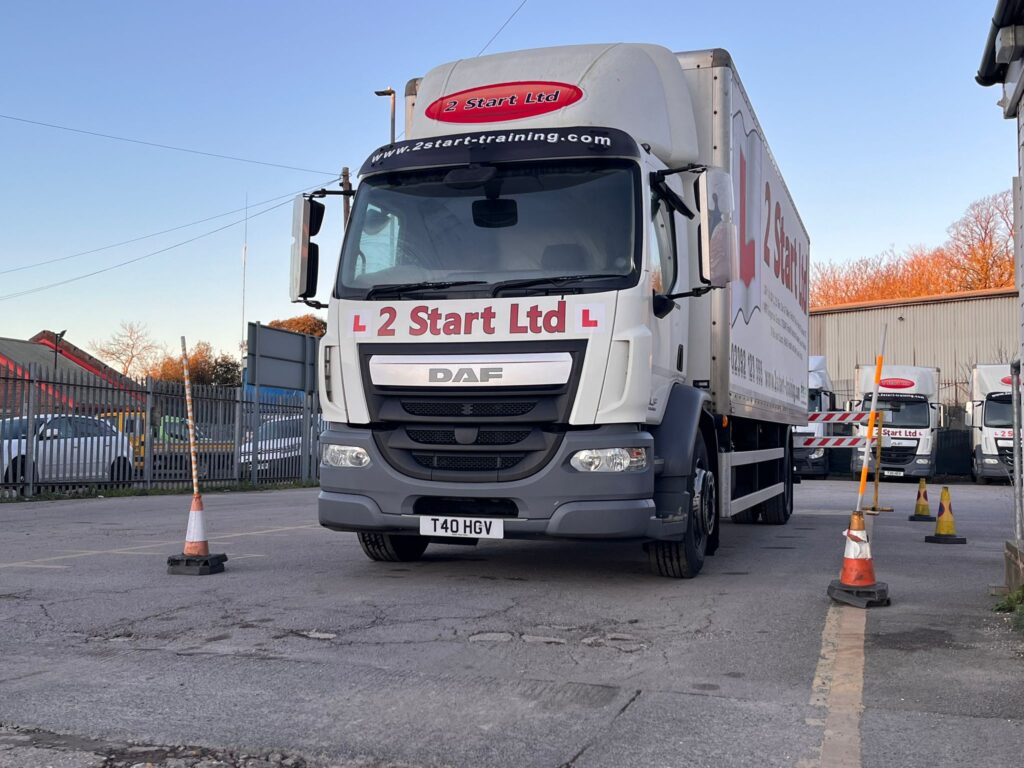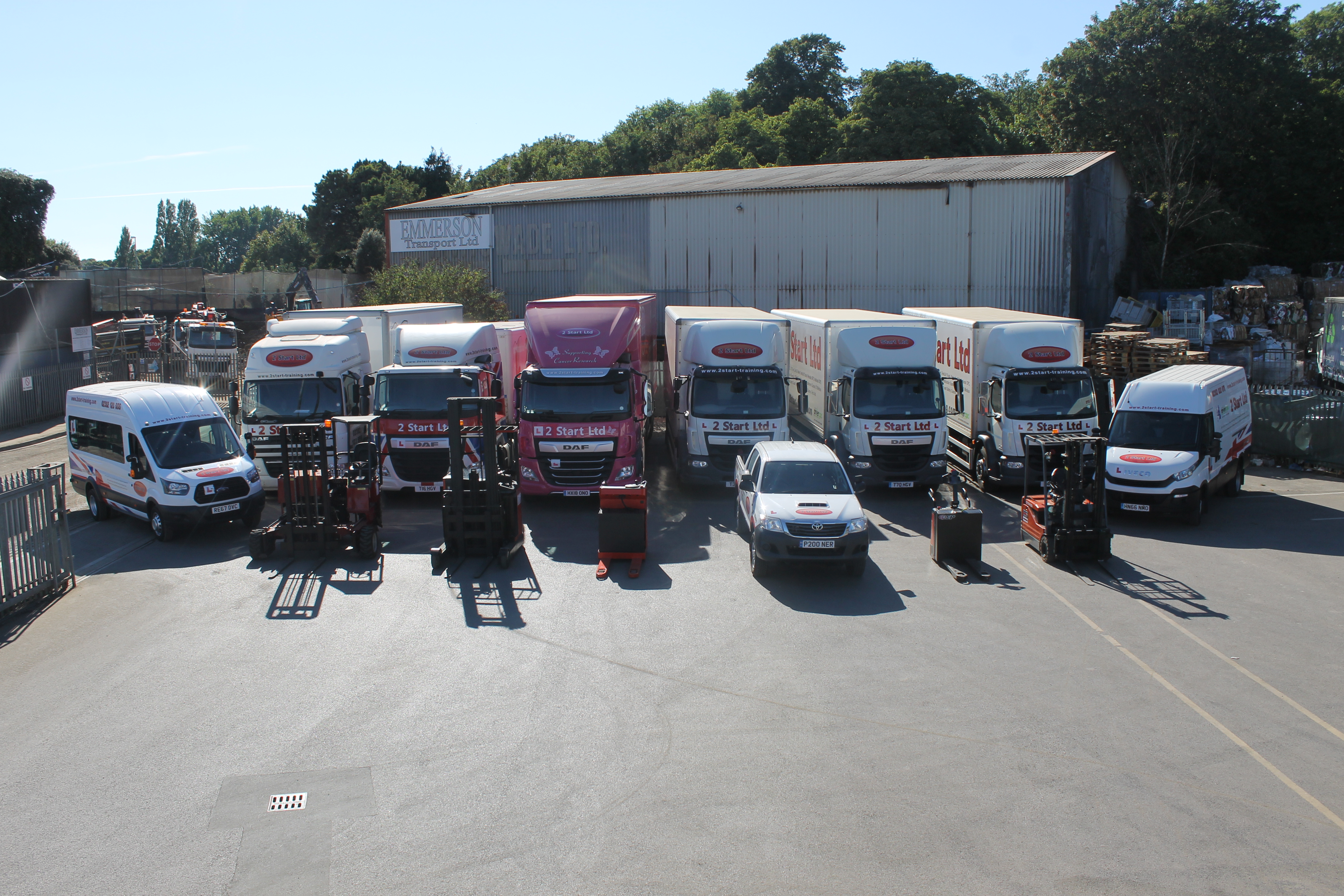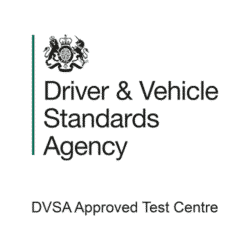To become a driver in the logistics industry, there are conditions you must abide by. These specific laws and regulations are covered in your driver training & test. You will then be expected to continue to implement them thereafter.
One of these core modules you will complete is the daily walkaround checks.
Back to Basics- What is a Walkaround Check?
The vehicle walkaround check is where you, as the driver, must check that your Heavy Goods Vehicle (HGV) is in good working order, and nothing is considered a defect with your vehicle before driving. A defect includes any component which is damaged, missing or incorrect.
This check must be completed at least once a day. Every driver at the start of their shift must record the walkaround check under “other work” on their tachograph. This is logged as 15 minutes on the tachograph.
In some cases, if the vehicle is used by more than one driver within the day, the check must be completed again upon handover. This is because it not only reinforces safe practice in the work place, but also because any vehicle used on a public road must be in a legal, roadworthy condition and be fit for purpose.
This vehicle walkaround check is vital to
- Minimise risk of accidents & incidents for the driver, and other road users, as well as reducing environmental damage.
- Ensuring quality of the vehicle remains at its peak, and any issues are reported and fixed promptly.
- Reinforce compliance amongst drivers in the logistics sector, which can subsequently aid in employee retainment, as there will be disciplinary actions from the employer or according enforcement.
You, as the driver, are responsible for assessing your vehicle, and govern whether it is defect free and safe to drive.

Complacency Kills
When it comes to completing these checks, it can seem monotonous and tiresome. Unfortunately, there are cases where some believe that the checks are not necessary, or at least don’t need to be as thorough. Reasoning for this can range, from over confidence, to negligence or guesswork.
You, and your whole team in your business rely on each other to reinforce the importance of thorough checks and works. It is vital to boost road safety through the consistent checks completed in the logistics industry.
Minimising Bridge Strikes
An example of complacency is the checking of the height of your vehicle. Any vehicle which is over 3 metres must, by law, have a height marker displayed in the cab of your vehicle.
Simply checking the height of your vehicle takes all but a couple of minutes. This time will save costs, damages, and road users from injury. However, for some, they don’t believe that it is a necessity to note the height of your vehicle.
A bridge strike occurs when an HGV’s height exceeds that of the bridge. This then causes damage to the environment, potential serious injuries to road users, not to mention structural damage to the bridges themselves. Damage to the bridge can severely impact the operation of the railway (in the instance that it is in fact a railway) otherwise they would have to check if it is safe for a train to pass over.
This is one reason as to why it is paramount that these checks are completed properly. Negligent behaviour, such as not making sure you are aware of your vehicle height, can cause damage to your vehicle, the environment, and potentially, yourself and others.
Tipper Truck Crash
In 2015, a tipper truck crashed and caused four fatalities, due to the brakes failing. It was argued that on the day of the incident, the vehicle had been determined to be safe to drive However, the lorry had “…serious and long standing defects with its braking system…”.
This highlights as to why you should always carry out checks, and also refuse to drive a vehicle which has a defect. By driving an HGV which is not fit for road use, you are putting many road users at risk.
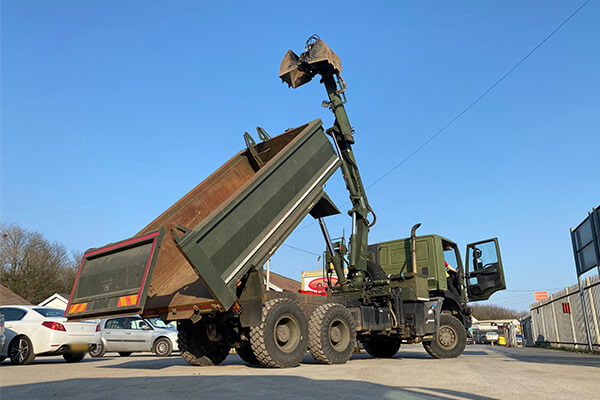
Location of Checks
You must complete checks for both inside and outside the vehicle. There is no definitive order in how you should complete your checks. Best practice is to find a routine that works for you. This, once again, will reinforce compliance in your daily routine.
Inside The Vehicle
Front View
This is to check that your Windscreen; Mirrors; Cameras or Glass is not damaged, missing, obscured from sight. In some cases, you can have official stickers (such as a operator licence disk) as long as they are not blocking your view of the road.
Horn
Your horn should work, and be accessible from the driver seat.
Windscreen Wipers/Washers
Your wipers and washers must be in working order, and not damaged, missing, or seriously worn.
Height Marker
The vehicle height can sometimes change, depending on if a flatbed trailer is loaded/unloaded or reloaded. Other trailer types, such as box trailers, aren’t affected by the height change depending on the load. The height marker should display the correct height of the vehicle in the cab.
Security and cab, door, step conditions
Your steps should be sturdy and safe to use. You must also ensure that all doors are secure, and in good working order, as well as checking all cab mountings and body panels are secure.
Steering
Your steering wheel should be able to move properly and does not jam. You steering wheel should also have “no excessive play” (meaning the steering wheel is “loose” and doesn’t work as it should).
Dashboard (warning lights and gauges)
Your gauges, warning lights and instruments should all be working. Warning lights includes engine warning, anti-lock braking system (ABS) etc. Your dashboard should light up and then extinguish once the engine has started.
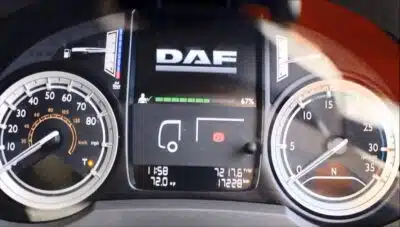
Brakes and Air Build-Up
Your footwell must be clear, so that you have easy access to your pedals. You must also ensure that the warning systems for your brakes work correctly. In the instance you are also towing a trailer, you will also need to check that the service brake operates both tractor and trailer brakes.
Seatbelts and Cab Interior
Seatbelts should not be damaged, and should be in proper working order. They should also stay secure when fastened, and retract accordingly, depending when fitted on your persons, or when taking the seatbelt off.
Outside The Vehicle
Lights and Indicators
All lights and indicators must work correctly, and all lenses, markers and stop lamps are clean, the right colour, and work properly.
Fuel and oil Leaks
Make sure the fuel cap is secured properly. You will also need to check for fuel or oil leaks underneath the vehicle.
Diesel Exhaust Fluid & Exhaust Smoke
Your Diesel vehicle must have plenty of exhaust fluid. You must also check your exhaust to see if it is emitting too much or an excessive amount of black smoke.
High Voltage Emergency Cut-off Switch
When you complete your driver training, you will need to show that you know the location of the High Voltage Emergency Cut-off Switch. This will also involve checking that all “high voltage electrical components” are in good working order, and there is no internal or external damage to them.
Brake Lines & Trailer Parking Brake
You must check that there is no damage or leaks to the brake lines. You will also need to check that the parking brake for the trailer attachment is working (if applicable).
Electrical Connections
All external electrical connections and exposed wires on the vehicle have to be insulated accordingly. You need to check that all electrical switched work as well.
Coupling Security
Your trailer must be attached to the vehicle properly. You will also need to check that any secondary locking devices are positioned correctly.
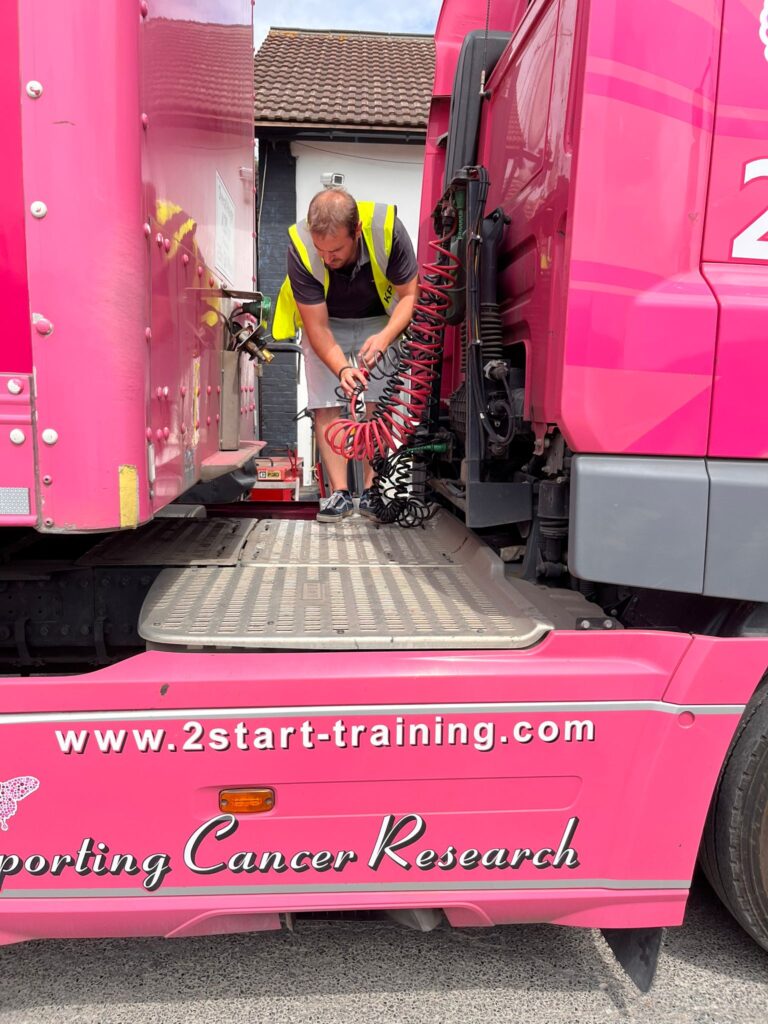
Security of body and wings
Body panels; fastening devices; cab doors (and trailer doors if applicable); and sideguards must be secure, work as intended and are not damaged.
Battery condition and security
Your battery must be secured, in good working order and not have any signs of leaking.
Spray Suppression
Also known as “mudguards”, spray suppression relates to the flaps installed on the reverse of the vehicle. They reduce the amount of road spray from the vehicle. If you require these, you must check that they are fitted, in good working order and not clogged with mud and/or debris.
Tyres and Wheel Fixings
All tyres and wheels must be in line with the following factors:
- Nothing trapped between the twin wheels at the rear.
- Secure and show no sign of being loose.
- Have a tread depth of at least 1mm across 3/4 of the width around the ENTIRE circumference of the tyre.
- Be inflated correctly.
- Show no cuts within the sidewall of each tyre.
- Cords must not be exposed.
- All wheel nuts are tight (this can be with the aid of the wheel nut indicators).
Security of Load
The load you are intending to carry must be thoroughly fastened with the correct load securing system. You can find out more about securing systems and how a load should be stabilised on the government website.
Reflectors
All your reflectors must be fitted with the correct colour and be clean. Clear any debris and replace any missing or damaged reflectors immediately.
Number Plate
There are multiple number plates on the front and rear of your vehicle. You will also have an additional plate if towing a trailer. All number plates must be clearly visible, and have no signs of damage. Any debris must be removed from the plate.
Markings and Warning Plates
All vehicle markings need to be visible to you and all other road users. In the instance you are carrying dangerous goods, you will also need to make sure that you are showing the correct hazard information panel, as this is a legal requirement. This will also include making sure the information is visible and fastened, so that it won’t loosen or fall off.
Other Equipment
Other equipment can vary, depending on the vehicle you are preparing to drive. You may have to check specialised loading apparatuses, or other equipment that is attached to the vehicle.
Walkaround Check Form
Your business may have a branded/unbranded check form which you can use. Alternatively, there are also basic check forms which can be found on the Government website.
You will fill out a walkaround check form every day, or at the start of your shift before driving. You will list out defects in the “report defects” section. In the instance of any errors which arise from your check, you will then have to note down your defect assessment and rectifications, as well as who you are reporting your defects to.
Enforcement Checks
At any time on the road, either the Driver and Vehicle Standards Agency (DVSA) or the police can stop you to complete a check on your vehicle. These enforcement checks work twofold. The first factor is to make sure that any “dangerous vehicles” are stopped immediately, as well as deterring drivers from becoming laxed during their walkaround checks.
The DVSA can also ask for records of your walkaround checks when pulled over. This is one of the multitude of reasons as to why you must stay compliant and complete comprehensive daily checks of the vehicle you are driving.
Driving a Dangerous Vehicle
If you are operating a vehicle on the road that is in a dangerous condition, not only could you face a fine, but you could also face a prison sentence. This also counts in the event of an accident, in which you cannot provide the evidence of completing adequate checks.

How to Reinforce Thorough Checks
The government released a blog titled: Safety first- don’t forget your walkaround checks! In this, they explain how you can limit risks and prevent incidents by completing safe, comprehensive and proper vehicle walkaround checks.
A list of tips follows, in which it will help you stay compliant when completing checks, or making sure that others are completing their checks, if you are an operator.

5 Top Tips To Reinforce Thorough Checks
1. Take Time
Your Walkaround check shouldn’t be a nuisance, nor should it be deemed a stress. Picking up a defect beforehand will save time, costs and potentially, lives!
Always make sure that you have plenty of time before needing to set off, so you can perform your checks thoroughly.
2. Prepare For the Weather
You could be completing your checks in different types of conditions. For example, you could be needing to perform your checks in the dark. In this instance, carry a torch with you.
3. Two is Better Than One
For the checks which involve you needing to operate the vehicle, ask a colleague to help check brake lights, indicators, exhaust emissions etc. This can help you save time, and in some cases, help give you a second opinion if you are uncertain about a check you are completing.
4. Training Doesn’t Stop After Passing
It should be in your best interest to keep up to date with the training when it comes to vehicle walkaround checks. When completing periodic CPC training, you can cover vehicle defects as one of the topics. This helps you keep your knowledge up to date with any changes. The DVSA provide a helpful and informative video explaining the walkaround checks you must complete.
5. Checks Don’t Stop Once You Set Off
Although the walkaround check is predominantly so that you can drive a safe working vehicle, as well as ensuring the vehicle is in good working order prior to setting off, there may be an instance when something that wasn’t a defect before, becomes a defect mid journey. If you discover a problem that is making your vehicle unsafe, you must report the problem, and have the issue resolved, regardless of the job you are carrying out.
Final Thoughts
All the points outlined should not be a deterrent for becoming an HGV driver. In fact, being trained to be more detailed in your line of work will better your skills. Showing that you are able to complete proper work, checks and documents could put you in line for a promotion, perhaps to even become a transport operator, and manage your own fleet. Thus, you can then pass down your level of experience and skills to your staff.
As long as you keep in line with the compliance that revolves around the internal and external checks of the vehicle you are driving, you will have no problem when it comes to conformity in the logistics industry.
When completing your driver training course with 2 Start Ltd, you will get the option to add the Module 2 & Module 4 initial Certificate of Professional Competence (CPC). The Module 4 initial CPC includes the daily walkaround check training and test. 2 Start have DVSA approved test centres across the south coast where you can complete your training.
Courses that include the Module 4 initial CPC are
- Car to Artic Training
- Category C Training
- Category C1 Training
- Category D1 Training
- Upgrade C to C+E Training
